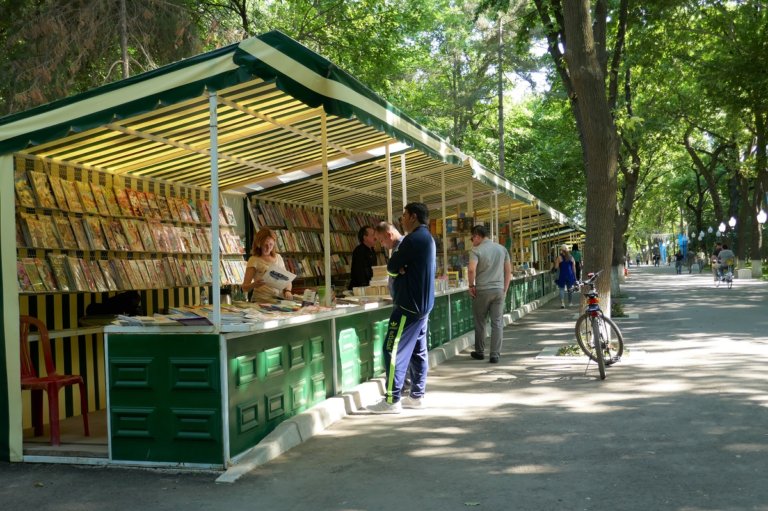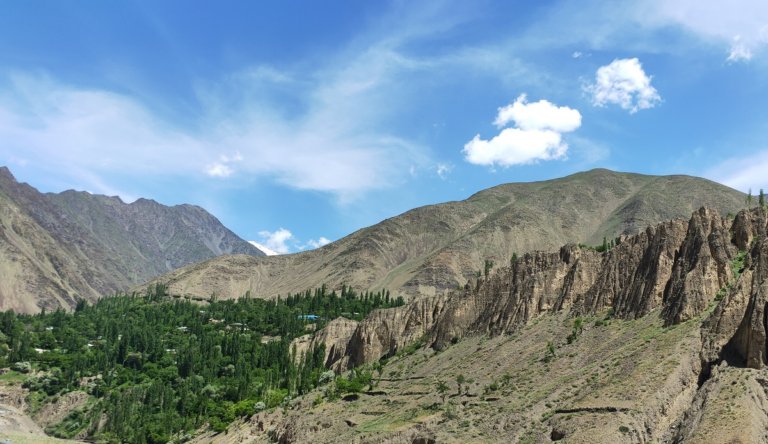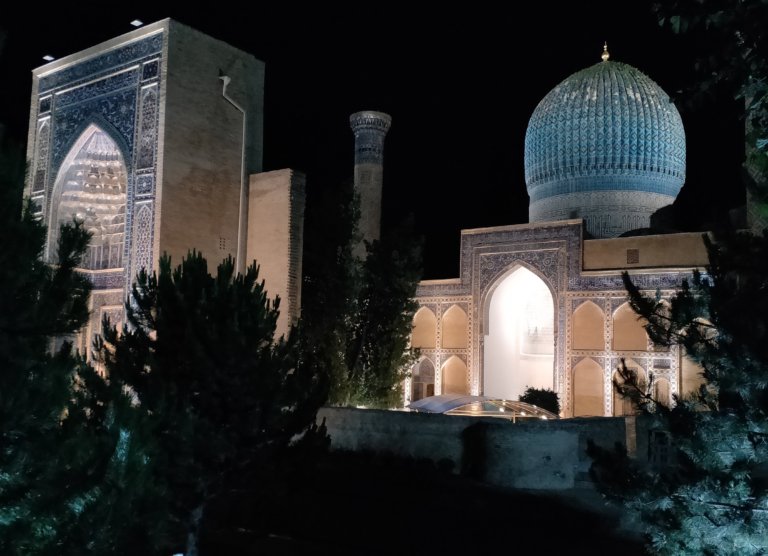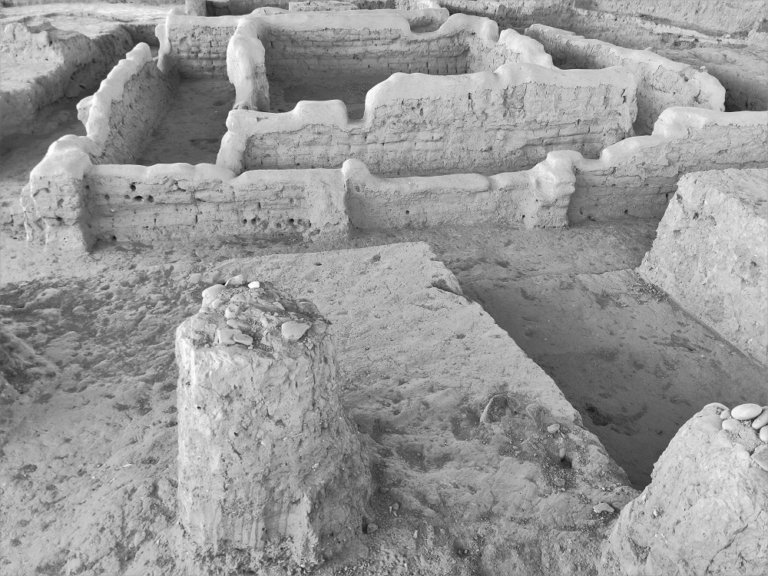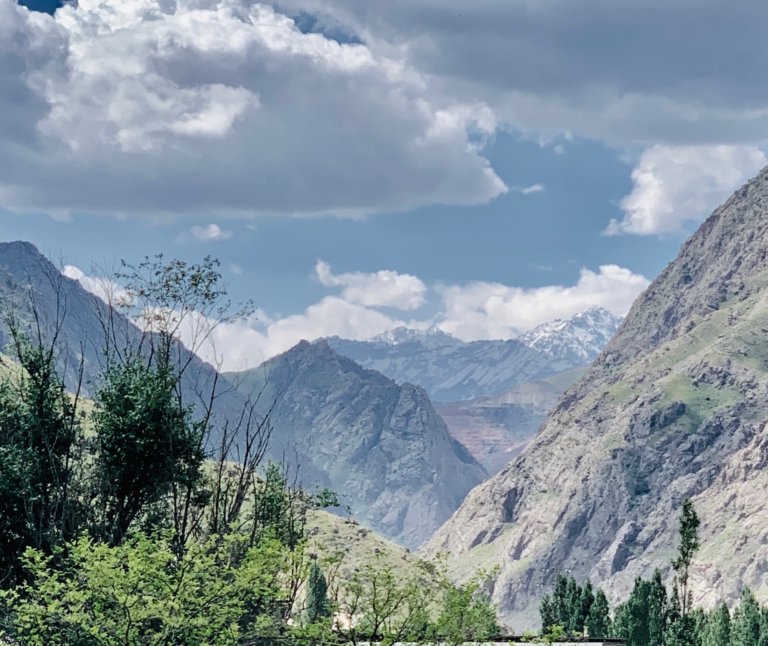
At breakfast met up with our fellow border crossers from the UK who had witnessed our visa embarrassment at the border.Nice couple ,he had lived in Oz both retired and travelling a lot.Heading to Dushanbe.
Headed into our town to the Panjshanbe (Thursday) Bazaar.Part of a complex of market, mosque, mausoleum, and library (formerly a madrassa). Interestingly madrassas have been banned in Tajikistan. Pigeons are welcomed to the mosque and flick to be fed by visitors who can buy bird food at the gates.

Across the square is the Bazaar area. Tajikistan seems different to other Central Asian countries in terms of the use of colour and building maintenance. This bazaar is a good example of that and inside is also an exception in the well ordered laying out of stalls.cThe normal shopping buzz of offer and counter off but very relaxed. We walk around being followed of calls to our guide -“where are they from?”. When told you one guy yells out Skippy!


At another stall a guy remarks in Tajik that Mel and are physically mismatched to great hilarity. Wants to know where we met and how many children we have.The conversation continues for some time after we leave the stall. We buy provisions. ,honey, tomatoes, bread, cheese and beer. Great fun chatting with sellers. One woman gives us more honey than we ask for but charges the lesser price which we are told is normal behaviour-refreshing!
Met a young woman who had won a year long scholarship to the US and been back two days in Tajikistan for 2 days- she was naturally unsettled and not sure where her future lay. Great chat though.
Then to a beautiful park with a mausoleum dedicated to Kamal Kuhjandi. His story is an interesting one because it shows the close relationship between the Tajik culture and that of Persia.Born in Kuhjand he wrote poetry in Farsi and left for Teheran due to a forbidden love. He subsequently was very popular in Iran and remains so to this day. The mausoleum here is a copy of the one in Teheran.


We walked on to the local Museum which was well presented as is the Tajik way. However with descriptions in Russian and given the complexity of Central Asian history, a lot was lost on me. However there was a magnificent display of mosaic depicting the life of and death of Alexander the great.The relevance of this was the furthest north that Alexander achieved in terms of conquest and he built a fortified town here.His original fort has been excavated and another built on top of the remains.


Moving on there was an exhibition that seemed to be devoted to the rise of Aryan civilisation. As I was poring of the description plates a group of young women asked me if I needed help.It turned out they were translators. Whilst they did help translate the descriptions I was still not sure of the relevance to Kuhjand or Tajikistan except to draw a lineage back to the ancient civilisations. However nice presentations and the introduction of yet another hero called Timur who had withheld the Mongols. Not the same as the Timur who is the famous hero of Uzbekistan.So I leave confused but determined to up my reading so I can make sense of it all.
So then to lunch and an introduction to a strange characteristic of Tajikistan restaurants. Well it might not be unique to Tajikistan but we have not seen it elsewhere before. So we know that some restaurants may have a couple of private rooms.In this restaurant they had about ten “cabins” complete with TV and room for about half a dozen people. Very unusual but entertaining. Our waiter turned the channel on our TV to Russian boxing!

So after we emerged form our luncheon cabin we got on the road to Istravshan.
Checked in to Hotel Bizarro-a very modern hotel with a teen-age check in person huge banner of the president out front, drop cloths on the red carpet, no towels on arrival and a general sense of not being ready for guests:-).

Anyway of ,around the town we headed for the Bazaar to check out the local tradesmen who speciality here, is knife making. After having two confiscated in China we brought one for food prep at a very reasonable price.
Then on to the food market where we received the normal shouts of “where are they from”.
Then slightly out of town we went to a 16th century mosque with beautiful original wood work. The highlight here though was the ninety year old gentleman sitting outside the mosque waiting for his friends. He was a delight and we engaged with him using Afredan as our interpreter. He wanted to know how old we were, how many children we had, but most importantly did we get the pension? We then had a conversation about comparative costs between OZ and TJ for consumer staples. He was simultaneously fascinated and horrified as Mel converted some of the staples such as bread and meat into local currency.

Because of his age he had a wonderful knowledge of the mosque and its comings and goings. He pointed out the teahouse on the mosque grounds which served as a community meeting point. It had been a mosque which pre dated the 16th century but had been destroyed in 1941 when the Russians were deployed there and replaced by a bath house. But now he was proud to say as a teahouse it served the community.
We headed home but unable to go past a bakery we stopped at and got a free loaf and smiles for our trouble.Then to a madrassa now a library which had fallen on bad times but which has received a Unesco grant. It is a real struggle for developing countries to protect their history-they have a strong desire to do so but it is often a matter of priority.
Back to the hotel where we had supper purchased from from the Bazaar and then a walk around the fort which sat on a hill behind the hotel.It was apparently originally an archeological site of an ancient fort but a new one was built for a 2500 century celebration. It had an amphitheatre, a VIP box and a nice view to the mountains-and of course a picture of the President.

